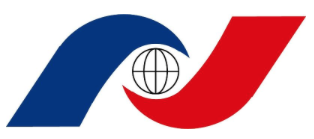
A statement and word of encouragement from National Space Society...
(Washington DC, September 6, 2016) At about 9:07 AM September 1, 2016, during preparation for a routine static fire test of the SpaceX Falcon 9 on Space Launch Complex 40 at Cape Canaveral, an explosion resulted in the loss of both the F9 and the satellite payload. At this time there are no reports of injuries in the incident. Although Elon Musk has reported that the explosion "Originated around [the] upper stage oxygen tank" the cause remains unknown.
"Clearly this incident is a setback for SpaceX," said Dale Skran, NSS Executive Vice President. "However, it emphasizes the wisdom of NASA in supporting multiple cargo and crew carriers to the International Space Station. NASA deserves the highest praise for holding fast to supporting multiple providers with dissimilar vehicles to provide both competition and redundancy. NSS looks forward to the return to flight of the Orbital ATK Antares rocket hauling cargo to the ISS later this year, and welcomes the addition of Sierra Nevada's Dreamchaser to the list of ISS cargo haulers."
With eight launches to orbit so far this year, SpaceX has already exceeded its previous record for successful launches in a single year. While launching commercial satellites to geosynchronous orbit and cargo to the ISS this year, SpaceX demonstrated the landing of an F9 first stage five times, one with return to launch site and four times with a landing on a drone ship. "Dramatic innovation such as SpaceX has been pursuing entails risk," said Bruce Pittman, NSS Senior Vice President. "And the recent incident exemplifies that risk. However, NSS is confident that SpaceX will discover the root cause of the problem, evaluate other potentially catastrophic failure modes and return to flight with a robust system. NSS strongly supports SpaceX's efforts to develop reusable vehicles and lower launch costs."
SpaceX is one of two providers selected by NASA to ferry crews to the ISS. Its capsule, the Dragon 2, which is designed to land propulsively, has the capability of allowing the crew to escape a pad explosion. David Cheuvront, member of the NSS Policy Committee and former NASA Safety Engineer for Orion and the Commercial Crew Certification Strategy Team said, "If there had been a crewed Dragon 9 on the pad instead of the Amos 6 satellite, there is good reason to believe that the crew and capsule would have survived." Elon Musk agreed, saying "This seems instant from a human perspective, but it [is] really a fast fire, not an explosion. Dragon would have been fine."
"The payload lost during this incident was not a high-value NASA payload. This underlines the wisdom of NASA using commercial launch services that fly many customers' payloads frequently rather than NASA owned rockets that fly rarely. There is every reason to expect that by the time crews fly to the ISS on an F9, a high level of reliability will have been demonstrated," said Mark Hopkins, Chair of the NSS Executive Committee."
Biographies for the quotes can be found at
www.nss.org/about/bios/skran.html
www.nss.org/about/bios/pittman.html
www.nss.org/about/bios/hopkins.html

